Ælfgif-who? provides short biographies of early medieval English women. Click on the podcast player if you’d like to hear this newsletter read aloud in my appealing Yorkshire accent.

Bebba: The queen who gave her name to the fort of Bebbanburg (Bamburgh, Northumbria)
In his Ecclesiastical History, the seventh-century historian Bede twice mentions a royal city that was named after Queen Bebba. This place, Bebbanburg, has been known as Bamburgh (or other variations) since the twelfth century. Next to nothing is known about this mysterious Queen Bebba, as if often sadly the case with such early medieval women, but in small scraps of evidence we might piece together a bigger story.
You may be aware of Bamburgh through the fictional character of Uhtred of Bebbanburg, the protagonist in the popular TV series The Last Kingdom. Alternatively, you might be familiar with the small Northumbrian village of Bamburgh due to its beautiful castle overlooking the sea, and if you’re from the north of England like I am, chances are you’ve visited it on holiday or a school trip.
While picturesque, historically it has been an important place of defence, due to its sea location and elevation. Bamburgh was a strategic fort in the early middle ages, but its significance pre-dates the the period usually covered by this newsletter by a long way. The castle is built on the Whin Sill, a huge igneous rock formation that stretches over the North East of England from the Northern Pennines to the Scottish border. This natural geographic landmark formed almost 300 million years ago during the collision of two continents, Euramerica and Gondwana, which created the supercontinent of Pangea. Movement in the earth’s plates during this event caused magma to escape through the crust, crystallising under the earth’s surface in the form of a ridge of dolerite rock.
Bamburgh Castle, Lindisfarne Castle, Dunstanburgh Castle and parts of Hadrian’s wall take all advantage of the naturally strategic high ground created by this geological event, which has certainly shaped geopolitics ever since. This has made Bamburgh a place of prehistoric ancient significance: evidence of human settlement there has been found from the Mesolithic, the Neolithic, the Bronze Age and the Iron Age.
Apart from Bede, our earliest written evidence about Bamburgh comes from two sources: the Anglo-Saxon Chronicle and the Historia Brittonum, a dubious history of the Brittonic people written by an unknown author in Wales in the ninth century. According to this latter text, the Britons had a fort there called Din Guarie before the migration of the Saxons, Angles and Jutes into Britain from northern Europe. The Anglo-Saxon Chronicle’s E text says that in 547 the King of Bernicia, Ida, built his own fort there, which was ‘first enclosed by a hedge and then after by a wall’. The Historia Brittonum tells us that it was Ida’s grandson, King Æthelfrith, who gave the fort of Din Guarie to his wife Bebba, after whom it was then named.
Æthelfrith was a pre-Christian king who has been credited with the creation of Northumbria: he was the first king to unite the smaller kingdoms of Bernicia and Deira. He was the father of the famous Saint-King Oswald, though according to Bede Oswald’s mother was not Bebba, but a woman named Acha, a princess of Deira. It is certainly possible that Æthelfrith could have had two wives in his lifetime, but it is noteworthy that Bede mentions Bebba twice and never in conjunction with Æthelfrith.
This is the entire extent of the available information on Bebba: a cursory mention in Bede and another in the Historia Brittonum. Neither of these sources are contemporary, though they could feasibly have been based on earlier sources now lost to us. The truth is, it is difficult to confirm or refute this origin of Bamburgh’s place name. Any attempt to recover Bebba from history would rely heavily on conjecture. We might conclude that Bebba must have been a very significant figure indeed to have a fort named after her, and we might put her, along with Æthelflaed, in the category of female military rulers of early medieval England. We could imagine her as a warrior-queen defending her fort, or as a beloved wife who Æthelfrith immortalised in the name of his kingdom’s most important settlement. On the other end of the scale, we must acknowledge that perhaps there is little truth in either Bede’s account or the account of the Historia Brittonum.
Whoever Bebba was, her name will forever be associated with Bamburgh. We might never find out another scrap of information about her, but through a place name many of us are familiar with, her legacy lives on almost 1.5 millennia after her death. It’s also interesting that the significance of Bamburgh to the royalty of early medieval Northumbria relies on an event that took place 300,000 millennia before Bebba was born. History is a funny thing, isn’t it.
If you’re interested in the politics and history of place names, you might want to hear about what I was getting up to while I was meant to be having a rest from the newsletter. I wrote an article debunking the false medieval etymology of the name of my home town, Goole in East Yorkshire, highlighting the negative impact that false meanings can have on the reputation of a place. My campaign has had some success already, being covered by the BBC and The Times as well as local press, and I have been in contact with Goole Town Council who are moving to to remove the false etymology from their website. Is that ‘impact’?






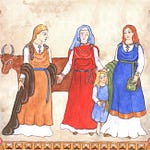
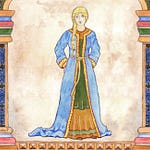
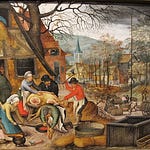
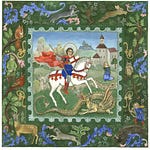



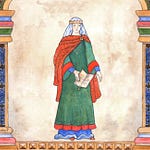
Share this post